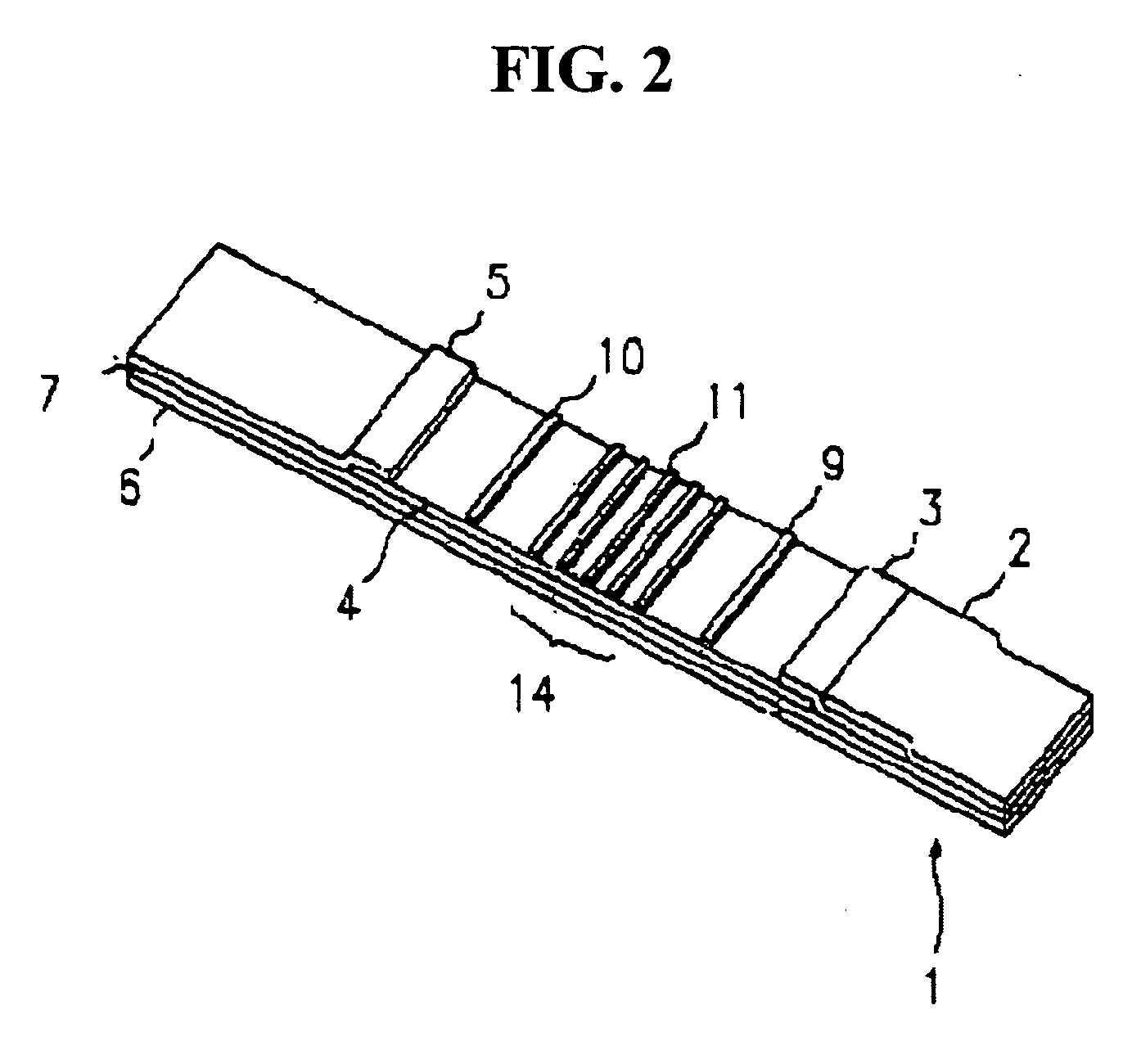Lateral flow quantitative assay method and strip and laser-induced fluoerescence detection device therefor
a quantitative assay and strip technology, applied in fluorescence/phosphorescence, laboratory glassware, instruments, etc., can solve the problems of difficult to make an exact diagnosis, the method cannot be readily used in a small-scale hospital, emergency room, etc., and its application is restricted
- Summary
- Abstract
- Description
- Claims
- Application Information
AI Technical Summary
Benefits of technology
Problems solved by technology
Method used
Image
Examples
example 1
Preparation of Monoclonal Antibody for Use as Detector and Captor
[0180] (1) Preparation of Culture Medium
[0181] Powdered Dulbecco's modified Eagle's media (DMEM) was dissolved in 900 ml of DDW and 3.7 g of sodium bicarbonate was added to the solution to adjust pH to 6.9. The solution was sterilized using a filter having a pore size of 0.45 μm, thus obtaining “incomplete DMEM”. 450 ml of the incomplete DMEM was supplemented with 10% bovine calf serum and antibiotic penicillin-streptomycin to obtain “complete DMEM”. 5 ml of the complete DMEM was mixed with 5 ml of 100× HT to form HT (hypoxanthine+thymidine) and 5 ml of 100× HAT (hypoxanthine+aminopterin+thymidine) to form a HT medium and HAT medium, respectively.
[0182] (2) Preparation and Injection of Antigen
[0183] For the first injection, purified enzyme protein solution (50 μg) was mixed with an equal volume (typically 0.3 ml) of complete Freund's adjuvant and the mixture was subjected to sonication for 30 seconds. The resulting...
example 2
Preparation of Protein-Fluorescent Material Conjugate
[0200] A fluorescent material as a signal generating source was ligated to the mouse monoclonal antibody against an analyte of interest for use in subsequent experiments. Proteins to be used in binding of the fluorescent material were purified to a purity of at least 95%. The proteins were used at a concentration of at least 1 mg / ml for optimal binding. The purified proteins were dialyzed against a buffer solution (0.1 M sodium bicarbonate, pH 8.5) not containing ammonia or amine ions in a refrigerator at 40 for 12 to 24 hours in order to facilitate the reaction with the fluorescent material. The proteins dialyzed were kept in a refrigerator or −200 freezer until use. The proteins dialyzed in the buffer solution were directly but slowly added to powdered Alexa 647 (Molecular Probes, USA) and the reaction was stirred for 1 to 2 hours in a refrigerator at 4□.
example 3
Purification of Protein-fluorescent Material Conjugate
[0201] Excess unreacted fluorescent material was removed using a distribution column packed with Sephadex G-25. As a purifying buffer solution, 0.1 M sodium carbonate (pH 8.5) was used. The purified protein-fluorescent material conjugates were kept in a refrigerator or −20□ freezer until use.
PUM
| Property | Measurement | Unit |
|---|---|---|
| absorption wavelength | aaaaa | aaaaa |
| width | aaaaa | aaaaa |
| width | aaaaa | aaaaa |
Abstract
Description
Claims
Application Information
 Login to View More
Login to View More - R&D
- Intellectual Property
- Life Sciences
- Materials
- Tech Scout
- Unparalleled Data Quality
- Higher Quality Content
- 60% Fewer Hallucinations
Browse by: Latest US Patents, China's latest patents, Technical Efficacy Thesaurus, Application Domain, Technology Topic, Popular Technical Reports.
© 2025 PatSnap. All rights reserved.Legal|Privacy policy|Modern Slavery Act Transparency Statement|Sitemap|About US| Contact US: help@patsnap.com



